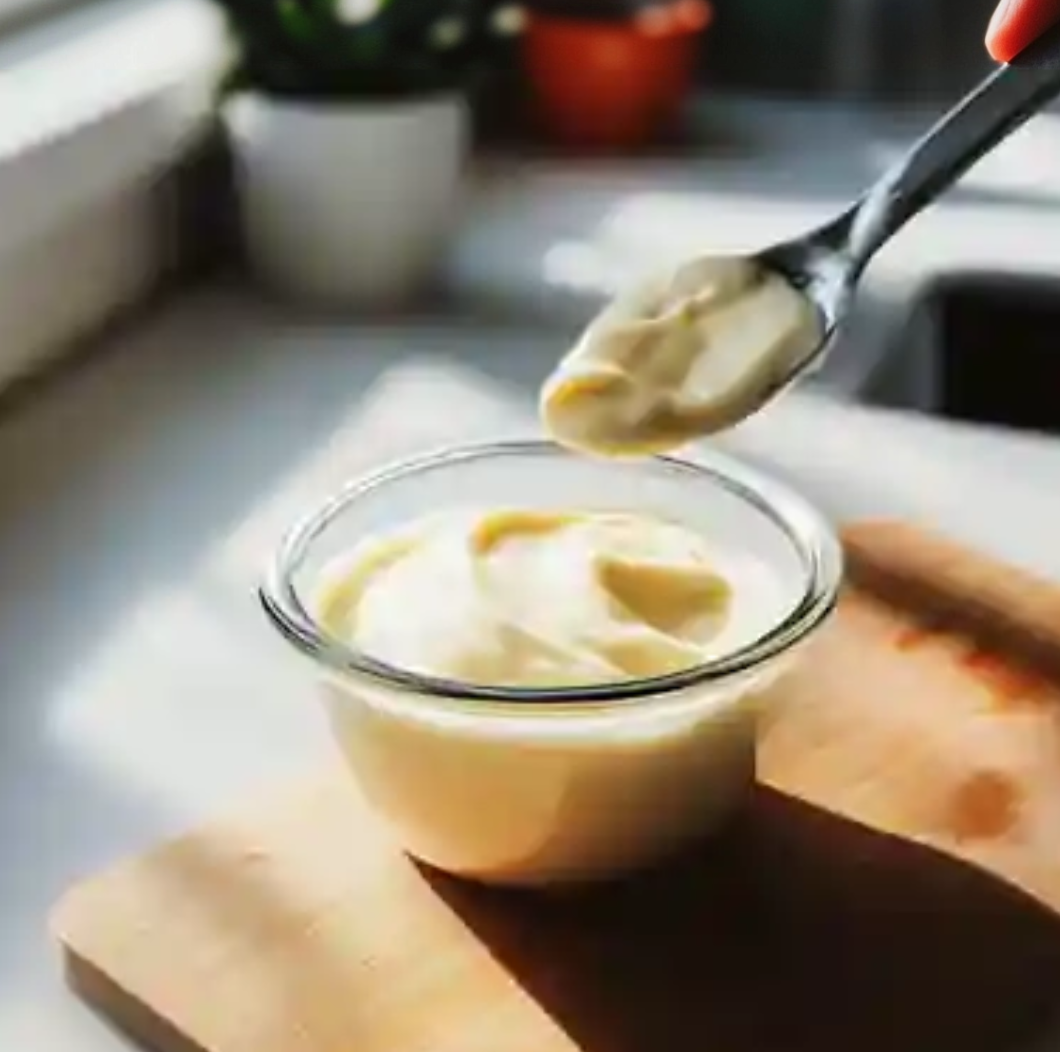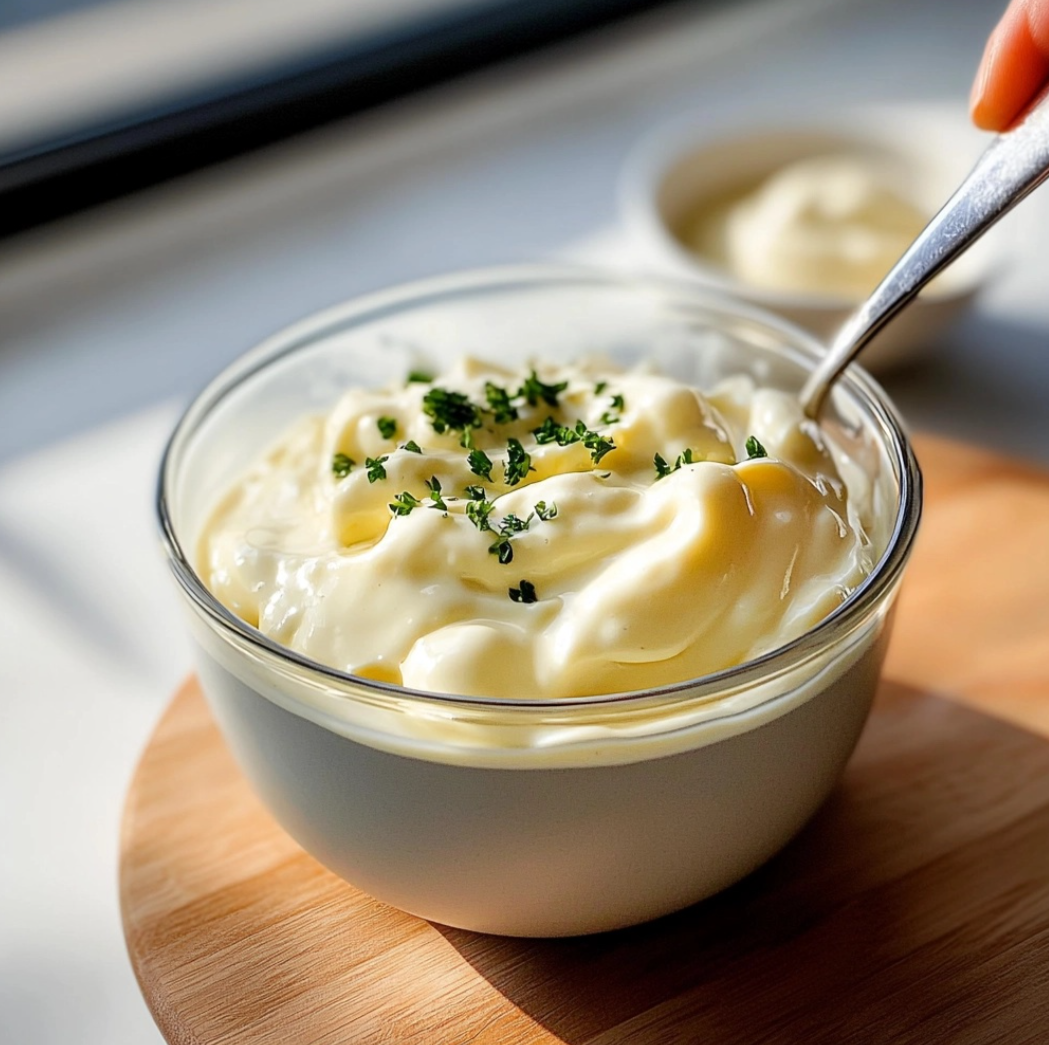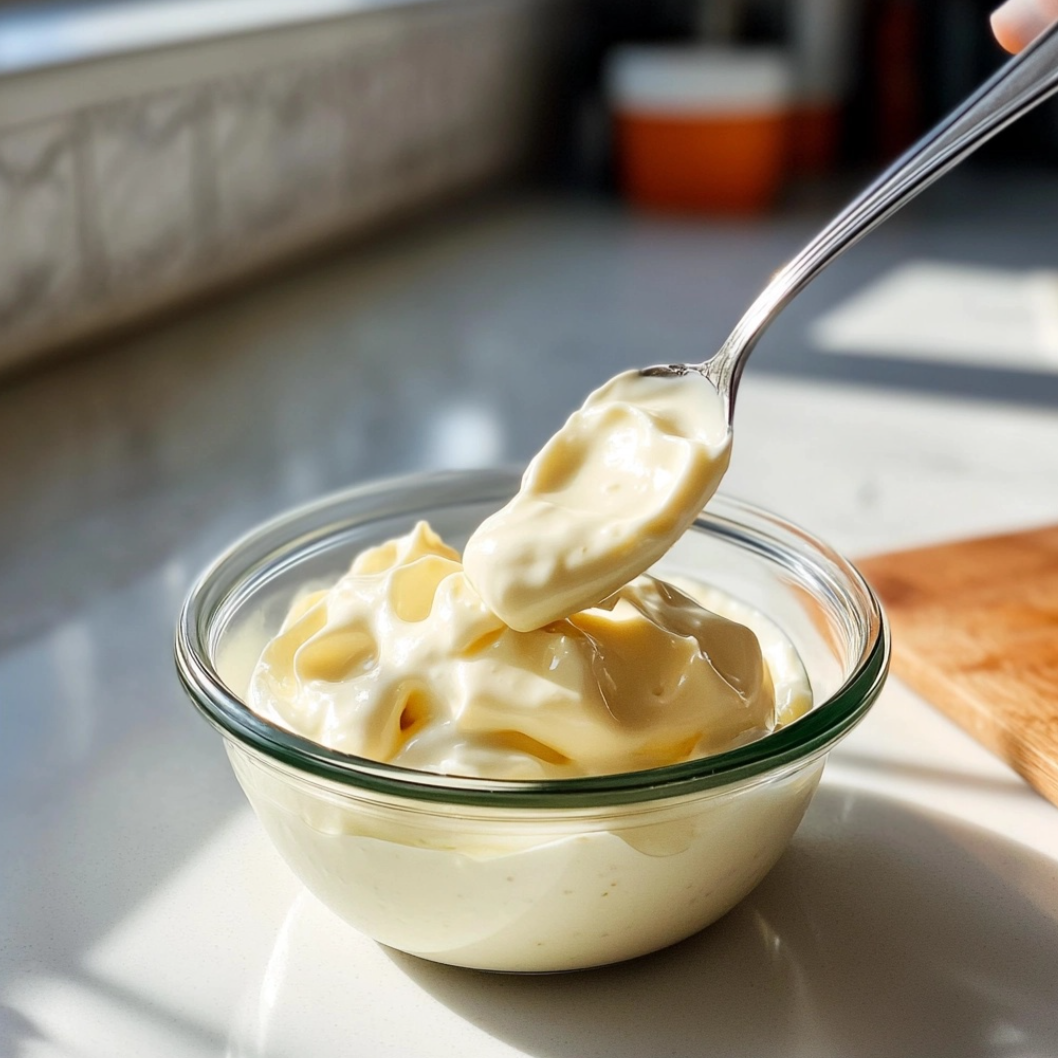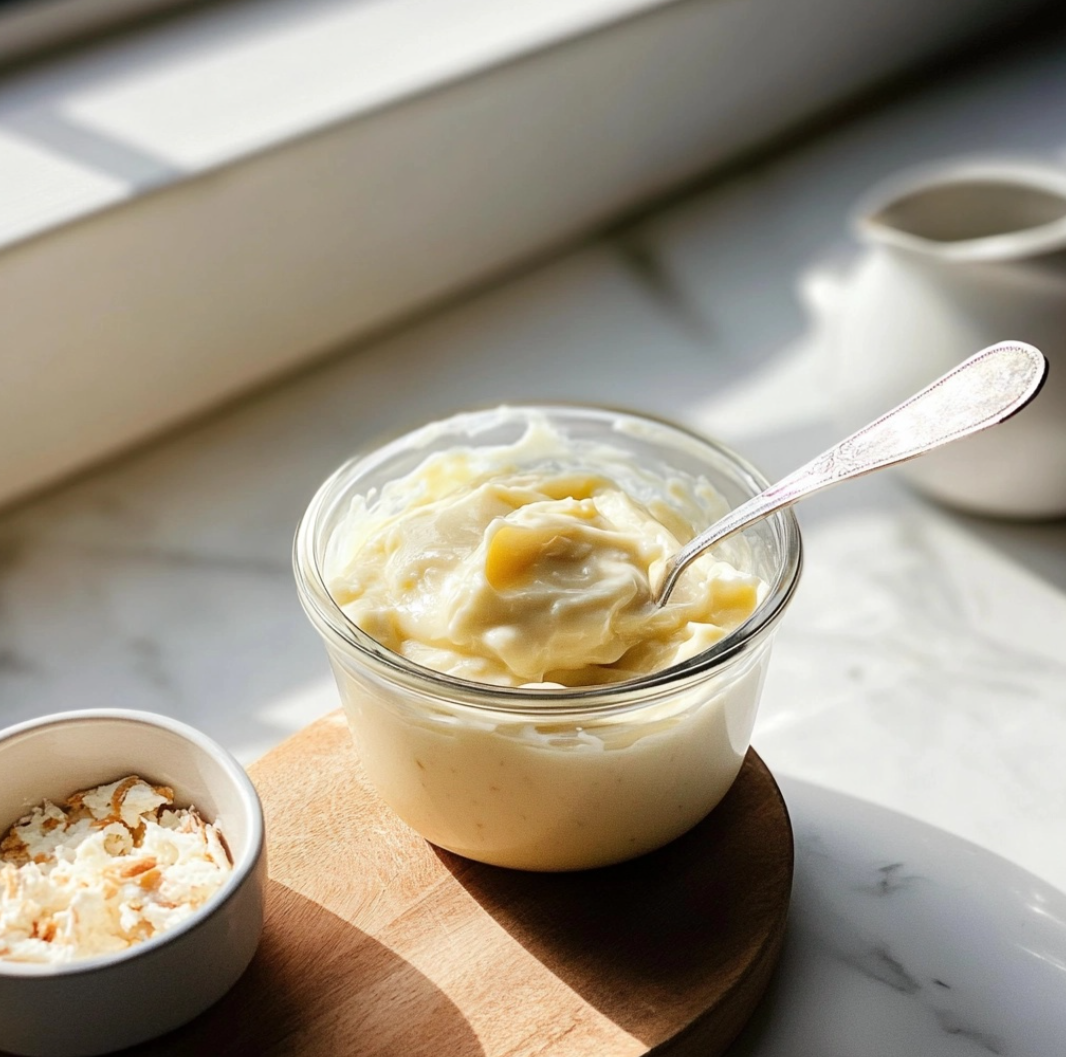Introduction
Mayonnaise is one of the most versatile condiments in the culinary world, enhancing the flavor of countless dishes. This easy homemade mayonnaise recipe is not only creamy and tangy but also free from preservatives, allowing you to enjoy a fresh spread that elevates everything from sandwiches to salads. In this article, we will explore various aspects of making mayonnaise, from the basics to advanced techniques, maintenance tips, dietary adaptations, and common questions. Let’s dive in and discover how to create this delightful spread!

Basic Recipe for Homemade Mayonnaise
Ingredients
- 3/4 cup olive oil
- 1 large egg
- 1/2 lemon (juiced)
- 1/2 teaspoon salt
Directions
- In a large bowl, combine the egg, lemon juice, and salt.
- Grab your immersion blender or a whisk, and blend those ingredients together until they’re well combined.
- As you blend, slowly drizzle in the olive oil. You’ll see the mixture emulsify and thicken up to a lovely creamy texture!
- Give it a taste and adjust the seasoning if you need a little more zing.
- Store your delicious homemade mayonnaise in a sealed container in the refrigerator for up to one week.
This simple recipe yields a creamy mayonnaise perfect for spreading on sandwiches, mixing into salads, or as a base for dressings. Enjoy the burst of flavor that homemade mayonnaise brings to your dishes!
Advanced Techniques for Perfect Mayonnaise
While the basic recipe is straightforward, there are several advanced techniques you can use to elevate your mayonnaise-making skills.
Using Different Oils
Experimenting with different oils can significantly alter the flavor profile of your mayonnaise. While olive oil is a classic choice, oils like avocado or grapeseed offer unique tastes and can be used for a more neutral flavor.
Temperature Matters
Using room temperature ingredients can help in achieving a stable emulsion. If your egg is too cold, it may not emulsify properly, resulting in a less creamy texture. Let your egg sit out for a bit before starting.
Flavor Variations
Add herbs, garlic, or spices to create unique flavors. For garlic mayonnaise, blend in a clove or two with the egg. Fresh herbs like basil or dill can be added for a fresh twist.
Storing Properly
For optimal freshness, store your mayonnaise in a clean, airtight container. Consider using a mason jar, which allows for easy access and minimizes air exposure.

Maintenance Tips for Homemade Mayonnaise
Proper maintenance of homemade mayonnaise ensures you can enjoy it at its best.
Storage Guidelines
Always store your mayonnaise in the refrigerator. It is crucial to use clean utensils when scooping out mayonnaise to avoid introducing bacteria that could spoil it.
Shelf Life
Homemade mayonnaise typically lasts about a week in the fridge. Always check for off smells or changes in texture before use. If it looks or smells strange, it’s best to discard it.
Using Leftover Mayonnaise
Incorporate leftover mayonnaise into other recipes. Use it as a base for salad dressings, or blend it with yogurt for a creamy dip. You can also use it in baked goods to add moisture.
Dietary Adaptations for Homemade Mayonnaise
Homemade mayonnaise can be adapted to suit various dietary preferences and restrictions.
Vegan Mayonnaise
For a vegan version, replace the egg with aquafaba (the liquid from canned chickpeas) or silken tofu. Blend the aquafaba or tofu with lemon juice and salt, and then slowly add oil while blending to achieve a similar texture.
Low-Calorie Mayonnaise
To create a lighter mayonnaise, use Greek yogurt as a base. Combine equal parts Greek yogurt and olive oil, add lemon juice and salt, and blend until smooth. This adaptation provides a creamy spread with fewer calories.
Allergy-Friendly Options
For those with egg allergies, using aquafaba or a store-bought egg-free mayonnaise can be a safe alternative. Always check ingredient labels if you are purchasing pre-made options.

FAQs About Homemade Mayonnaise
Can I use a blender instead of an immersion blender?
Yes, a regular blender works well for making mayonnaise. Just make sure to start at a low speed and gradually increase as you add the oil.
What can I do if my mayonnaise doesn’t thicken?
If your mayonnaise doesn’t thicken, it may be due to the ingredients being too cold. You can try adding a bit more oil while blending. If it still doesn’t work, you can start with a new egg and slowly add the failed mixture to it.
Is homemade mayonnaise safe to eat?
Yes, as long as you use fresh, high-quality ingredients and store it properly, homemade mayonnaise is safe to eat. However, because it contains raw eggs, individuals with compromised immune systems should be cautious.
Can I freeze homemade mayonnaise?
Freezing mayonnaise is not recommended, as it can separate and change in texture once thawed. It is best enjoyed fresh and stored in the refrigerator.
What are some creative ways to use mayonnaise?
Mayonnaise can be used in various dishes. Try it as a base for sauces, dips, or dressings. You can also use it in recipes for potato salad, coleslaw, or even as a topping for burgers.
Conclusion
Homemade mayonnaise is more than just a creamy condiment; it’s a culinary staple that can elevate your dishes and impress your guests. By taking the time to prepare this fresh spread, you not only enhance your meals but also gain the satisfaction of knowing exactly what goes into your food. The simple combination of olive oil, egg, lemon juice, and salt can transform a basic dish into something extraordinary.
With the techniques outlined in this article, you can easily adapt your mayonnaise to suit various dietary preferences, ensuring that everyone at your table can enjoy its rich flavors. From vegan alternatives to lighter versions, the possibilities are endless. Moreover, the maintenance tips provided will help you keep your homemade mayonnaise fresh and delicious, allowing you to enjoy its creamy goodness throughout the week.
As you experiment with different oils, herbs, and spices, you’ll discover a world of flavor combinations that can make your mayonnaise uniquely yours. So, whether you’re slathering it on a sandwich, stirring it into a salad, or using it as a dip for fresh veggies, homemade mayonnaise opens the door to creativity in the kitchen.
Embrace the joy of making your own mayonnaise and share your culinary creations with family and friends. With just a few minutes of preparation, you can enjoy a delightful condiment that brings freshness and flavor to every meal. Now, grab your ingredients and get ready to whip up a batch of this creamy, tangy delight—you won’t be disappointed!

